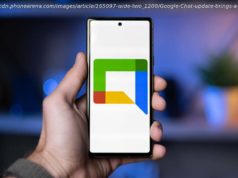Just in case you had any lingering doubt, or specific questions about specific Samsung Galaxy S9 and S9+ technologies, here are some new details on the two’s components.
We already know a great deal about the specs and features of the fast-approaching Samsung Galaxy S9, and pretty much everything that will make the GS9+ stand out, but just in case you were craving additional insight into the two’s internal structure, Korea’s ET News has come out with a crazy detailed report based on supply chain intel.
Something tells us these are more than assumptions or educated guesses, and although a large part of the information was already set in stone, it’s always nice to see corroborating evidence and in-depth data come together to complete such an exciting puzzle.
Unsurprisingly, Samsung is expected to manufacture the Galaxy S9 and S9+ rear cameras in-house, going with a trendy dual lens arrangement for the latter version only, while the former will almost certainly settle for a single 12MP OIS shooter.
But even the “regular” S9 should hold a neat trick up its sleeve in so-called variable aperture technology bringing phones closer than ever to advanced DSLR operation. Depending on surrounding lighting conditions, you’ll be able to take snapshots with anywhere between f/1.5 and f/2.4 aperture values.
The two Galaxy S9 variants will purportedly also share an 8MP front-facing camera with autofocus and iris recognition functionality, although the smaller model is actually expected to combine the two in a single package, whereas the S9+ should separate the iris camera from the standard selfie shooter.
Speaking of size, it’s no longer a secret the GS9 will measure 5.77 inches in screen diagonal and pack a 3000mAh battery, with the Galaxy S9+ likely to bump that up to a 6.22-inch “Infinity Display” and 3500mAh cell.
Interestingly, the two next-gen flagship phones could both use a so-called “Substrate Like PCB”, or SLP, instead of a traditional printed circuit board, saving precious internal space technically allowing them to fit larger batteries inside smaller overall bodies.
Finally, Y-OCTA (Your On-Cell Touch AMOLED) screen technology is going mainstream, helping Samsung reduce costs in the production process of lighter and thinner OLED panels than ever.






